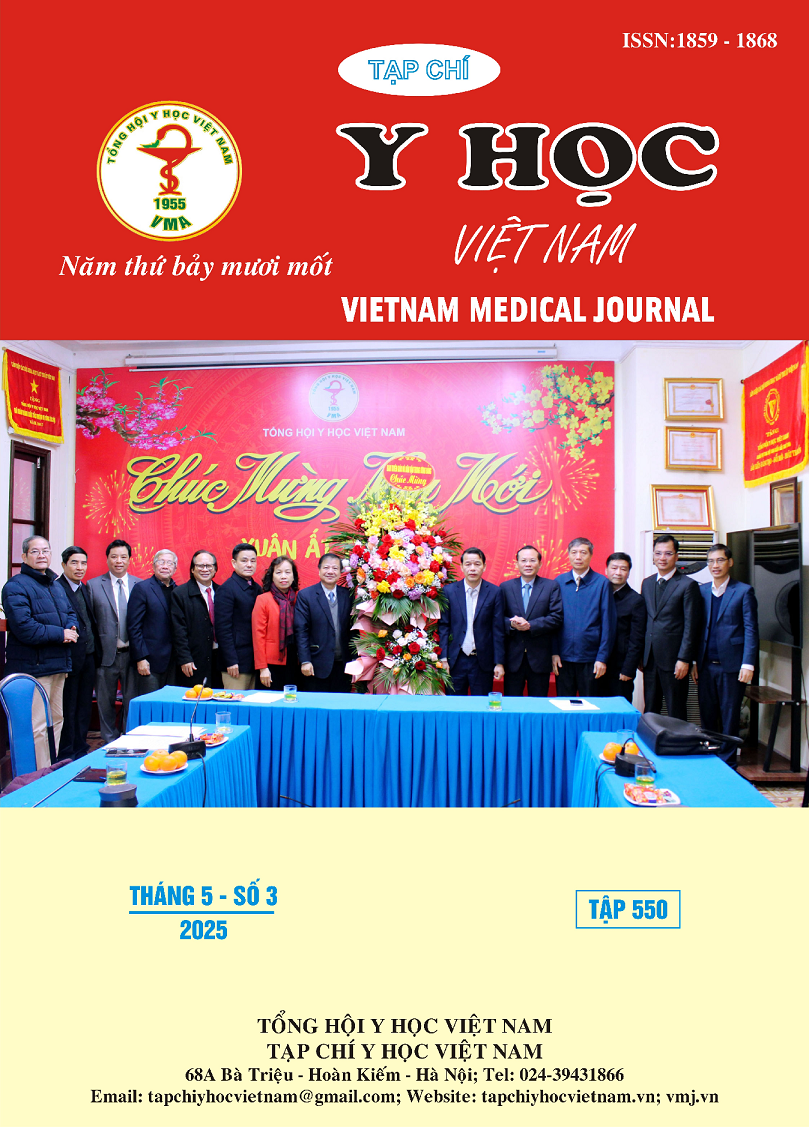MORPHOLOGICAL CHARACTERISTICS OF THE ROOT CANAL SYSTEM IN PERMANENT MANDIBULAR INCISORS: A CBCT STUDY IN ADULTS AGED 20-25 YEARS
Main Article Content
Abstract
Background: Permanent mandibular incisors exhibit diverse root canal morphology, with a significant proportion having two roots. A detailed understanding of this structure aids in effective endodontic treatment. Objectives: To determine the root canal morphology of permanent mandibular incisors based on Vertucci’s classification using cone-beam computed tomography (CBCT) in adults aged 20-25 years. Materials & Methods: A cross-sectional study was conducted on 160 mandibular incisors. The teeth were processed, imaged using CBCT, and analyzed for: (1) Number of root canals, (2) Classification of the root canal system according to Vertucci, (3) Cross-sectional shape of the root canal in Vertucci Type I incisors at different thirds of the root. Results: In central incisors, the proportions of teeth with one and two root canals were equal. In lateral incisors, 61.25% had two root canals, higher than the 38.75% with one root canal. Vertucci’s classification: Type III was the most common (49.38%), followed by Type I (44.37%), Type V (3.80%) and Type VII (2.50%) were less frequent, Types II, IV, and VIII were not observed. Cross-sectional shape in Type I canal system: A circular shape was predominant in the coronal and apical thirds. An elongated oval shape was most common in the middle third. This study provides crucial data for optimizing endodontic treatment of mandibular incisors.
Article Details
Keywords
Permanent mandibular incisors, root canal morphology, Vertucci’s classification
References
2. Karobari MI, Parveen A, Mirza MB, et al. Root and Root Canal Morphology Classification Systems. Int J Dent. 2021;2021:6682189. doi:10.1155/2021/6682189
3. Trịnh TTH. Nghiên Cứu Điều Trị Nội Nha và Đánh Giá Kết Quả Đối Chứng Hệ Thống Hình Thái Ống Tủy Nhóm Răng Cửa Hàm Dưới Vĩnh Viễn. Trường Đại học Y Hà Nội; 2009.
4. Han T, Ma Y, Yang L, Chen X, Zhang X, Wang Y. A study of the root canal morphology of mandibular anterior teeth using cone-beam computed tomography in a Chinese subpopulation. J Endod. 2014;40(9):1309-1314. doi:10.1016/j.joen.2014.05.008
5. Kayaoglu G, Peker I, Gumusok M, Sarikir C, Kayadugun A, Ucok O. Root and canal symmetry in the mandibular anterior teeth of patients attending a dental clinic: CBCT study. Braz Oral Res. 2015;29:S1806-83242015000100283. doi:10.1590/1807-3107BOR-2015.vol29.0090
6. Saati S, Shokri A, Foroozandeh M, Poorolajal J, Mosleh N. Root Morphology and Number of Canals in Mandibular Central and Lateral Incisors Using Cone Beam Computed Tomography. Braz Dent J. 2018;29(3):239-244. doi:10.1590/0103-6440201801925
7. Paes da Silva Ramos Fernandes LM, Rice D, Ordinola-Zapata R, et al. Detection of various anatomic patterns of root canals in mandibular incisors using digital periapical radiography, 3 cone-beam computed tomographic scanners, and micro-computed tomographic imaging. J Endod. 2014; 40(1): 42-45. doi:10.1016/j.joen.2013.09. 039
8. Milanezi de Almeida M, Bernardineli N, Ordinola-Zapata R, et al. Micro-computed tomography analysis of the root canal anatomy and prevalence of oval canals in mandibular incisors. J Endod. 2013;39(12):1529-1533. doi:10.1016/j.joen.2013.08.033
9. Swain MV, Xue J. State of the art of Micro-CT applications in dental research. Int J Oral Sci. 2009;1(4):177-188. doi:10.4248/IJOS09031
10. Shemesh A, Kavalerchik E, Levin A, et al. Root Canal Morphology Evaluation of Central and Lateral Mandibular Incisors Using Cone-beam Computed Tomography in an Israeli Population. J Endod. 2018;44(1): 51-55. doi:10.1016/j.joen. 2017.08.012


